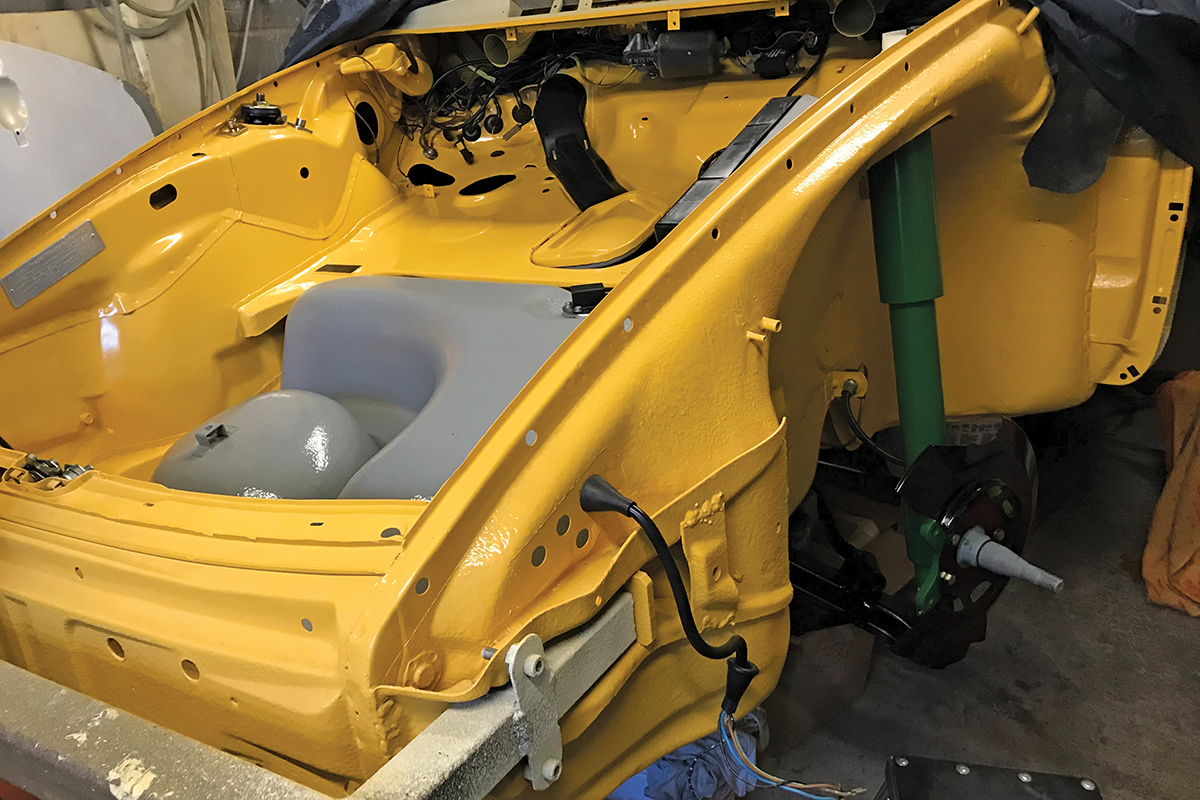The way Phil Perrin’s Carrera 3.0 first came into his and his family’s lives is not the most conventional of Porsche stories. Being a motorbike fan since the age of 10, Phil owned many bikes over the years with his biggest being a Kawasaki Z1000 R2. Typically favouring bikes over cars, one day he decided it was time to switch things up and, after a pep talk from his boss, he decided it was time to try a Porsche.
After consulting Autotrader and selling his Kawasaki KR1, Phil and his family became the proud owners of a 1976 Carrera 3.0. Originally sprayed a rare Talbot Yellow with a full tartan interior, the car arrived on the drive after being repainted by a previous owner to Pearl White and refitted with a red leather interior. It came as a surprise to Phil’s wife, who was none the wiser about the Porsche until it arrived.
With Phil using a Vauxhall Cavalier company car as his daily driver, the Porsche would replace a 16-valve Astra GTE and serve as her everyday car. She grew immensely close to it – so much so that, when their first child came along in 1996, a car seat was strapped into the passenger side. However, after two more children found their way into the family, the decision was made to take the Porsche off the road in favour of a more practical car. But Phil could never say goodbye to the car he loved so much and instead kept it tucked away, safe in his garage, for nearly 10 years.
In 2010, after the children had grown up and his role as engineer for his son’s motocross career came to an end, Phil decided it was time to pull off the dust sheet and get to work restoring the Carrera 3.0 to its original specification. Finding little to no rust, he set about restoring the right-hand-drive after a rather botched conversion from left-hand-drive had been attempted by a previous owner. Working in printing, Phil describes himself as mechanically minded so this wasn’t intimidating. He explains: “When you think of printing, you think of small, photocopier-type printers, whereas the ones I work with are the size of houses. They are very mechanical and, over time, I’ve developed a good mechanical aptitude. I even spent my weekends re-building my son’s motocross bike when he used to compete as a child. He would blow it up on a Sunday and, by the next Sunday, I would have re-built it.”

Using both his mechanical aptitude and his past experience, Phil stripped out the past owner’s poor craftsmanship and rebuilt the right-hand-drive from scratch; a truly immense task to begin a restoration with.
Phil then set about re-painting the car to Talbot Yellow. He described the re-painting as an “absolute nightmare” and it became one of the only aspects passed on to a professional, along with the black window frames and body trim. He explains: “It was a difficult process. The work we do in printing is measured and extremely accurate. We use spectrophotometers, machines that measure the reflected light of a print sample and formulate the DNA of a colour, which we then use to recreate colours for different jobs. With cars, on the other hand, the colour can vary from batch to batch, so pinpointing the colour we needed was not easy and some of the original pigments were no longer available. The best way to colour match, I found, was to find parts of the car that were still in the original yellow and match it the best I could.”
Once he had decided on the car’s new (old) colour, Phil handed the task over to Premier Autobody in Bridgnorth in order to get the job done to the standard he wanted. Having done almost every other aspect of the car himself, he could not bear to risk doing a poor job on something he held so dear. “The team at Premier Autobody advised a single stage 2k paint to complement the car’s age rather than the base and lacquer in modern cars because we didn’t want it to look plastic,” he says.
So it’s Talbot Yellow again and the right-hand-drive set-up has been greatly improved, but what is next for Phil and his Carrera 3.0 now? In Phil’s opinion, he has a long way to go. “I think, with any restoration, there is always an element of passion. You feel like no matter how much you do, the job will never be fully finished. There is always another thing to find and another thing to do. For me, I think it will always be ongoing because I don’t intend to sell it. When you spend that much time for so long, it becomes family and I don’t think we could ever say goodbye.”
And what does Phil’s family think of the newly restored Carrera? “My eldest, who obviously has been with the car the longest, loves it and drives it when I let him. He loves coming to events like Caffeine&Machine with me, whereas my other two don’t share the same enthusiasm for motor vehicles. My wife, on the other hand, well, she used to drive it every day back in the ’90s and I’ll sometimes catch her debating with my son over who gets to go out in it.”
With the benefit of experience, Phil believes there is one key aspect to restoring a classic Porsche. “I think the key to any restoration is to do one thing at a time and absolutely focus on that one thing,” he explains. “Don’t think ‘oh my god, I’ve got all this to do and then I’ve got to do this.’ You need to be able to see the wood for the trees. You’ve got to be able to see the thing you’re doing, focus on the thing you’re doing and do the absolute best you can.”